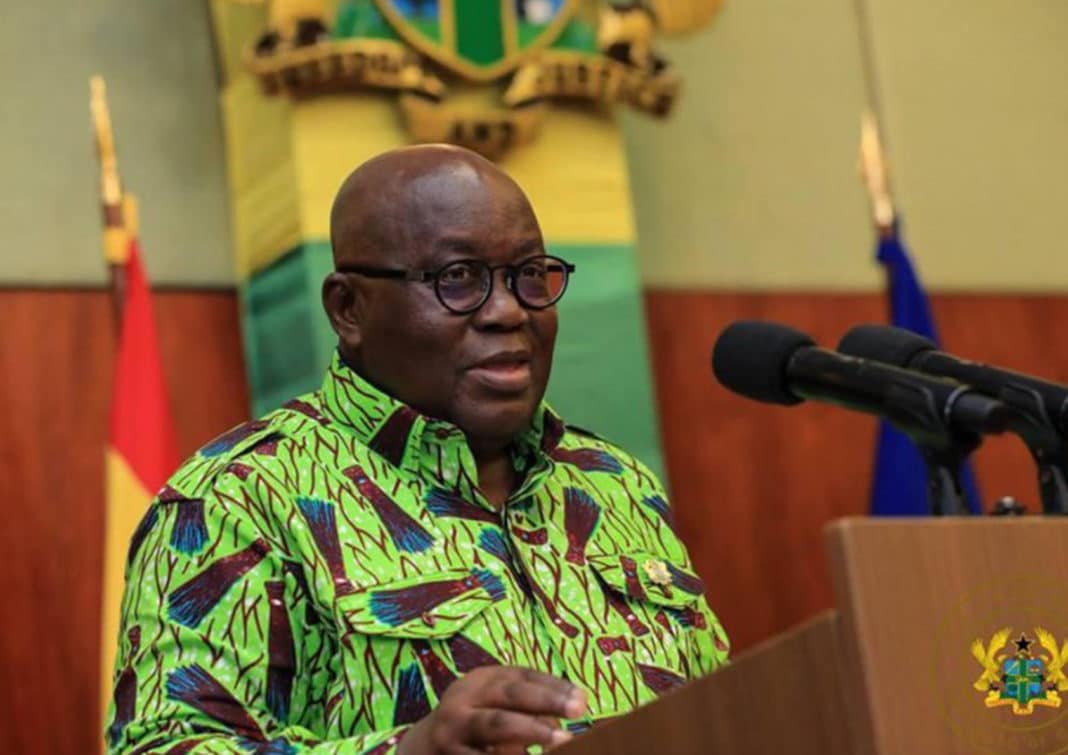When President Nana Addo Dankwa Akufo-Addo addressed Ghanaians on Sunday, June 21, he explained why Ghana’s Covid-19 recovered cases had seen more than 100% increase as announced the previous day. He said it was based on a new policy by the World Health Organisation (WHO). The president said:
“As at Saturday, 20th June, the total number of positives, cumulatively, stands at fourteen thousand, and one hundred and fifty-four (14,154), out of the two hundred and seventy thousand, three hundred (270,300) tests conducted. Under the revised policy, five thousand, nine hundred and twenty-five (5,925) persons have recovered and been discharged. This brings the total number of recoveries to ten thousand, four hundred and seventy-three (10,473). The number of active cases is, thus, three thousand, five hundred and ninety-six (3,596).”
The President said the Ghana Health Service declared the persons as “recovered” based on the new “discharge/recovery” policy of the WHO.
He said, “After three (3) weeks of analysing and studying this update and recommendation and situating it in the Ghanaian context in line with the admonition by WHO to Member States, this new patient discharge/recovery policy has now been adopted by Ghana, as have some countries in the European Union, Singapore, India, Malaysia, Hong Kong, and in Dubai.”
The President’s claim that the number of persons discharged after being declared “recovered” based on the WHO policy is misleading and problematic for ongoing efforts to combat the pandemic in Ghana.
This is because the WHO’s new policy is not about “recovery.” It is the previous policy published on January 12, 2020 that was about recovery. To declare someone recovered, the WHO’s initial policy, as admitted by President Akufo-Addo, required that a person who tested positive for Covid-19 should have “two consecutive, negative tests before you are declared as having recovered.”
According to WHO, “The initial recommendation to confirm clearance of the virus, and thus allow discharge from isolation, required a patient to be clinically recovered and to have two negative RT-PCR results on sequential samples taken at least 24 hours apart.”
The new June 17, 2020 policy by the WHO is, however, is not about recovery. It is titled “Criteria for releasing COVID-19 patients from isolation.” This new policy does not require people to recover or be tested twice before they are released from isolation or discharged from the hospital.
The word “recovered” is mentioned only twice in the WHO document and they both refer to the previous policy, not this new one, which the president quoted. The word “recovery” is not used at all in the policy.
In the new policy, “discharge”, “discharging” or “discharged” are mentioned 13 times and “release/releasing” (from isolation) is mentioned six (6) times. The policy (discharge) is actually a shift away from the “recovery” policy.
For this reason, Covid-19 patients are no longer tested to ensure that they are negative before they are discharged. The WHO said the new criteria for discharging patients are as follows:
- For symptomatic patients: 10 days after symptom onset, plus at least 3 additional days without symptoms (including without fever and without respiratory symptoms).
- For asymptomatic cases: 10 days after positive test for SARS-CoV-2
The WHO said it came to revise its previous policy because of problems associated with the previous recovery policy. These are:
- Long periods of isolation for individuals with prolonged viral RNA detection after resolution of symptoms, affecting individual well-being, society, and access to healthcare.13
- Insufficient testing capacity to comply with initial discharge criteria in many parts of the world.
- Prolonged viral shedding around the limit of detection, having negative results followed by positive results, which unnecessarily challenges trust in the laboratory system.23-28
According to the WHO, “The updated criteria for discharge from isolation balances risks and benefits; however, no criteria that can be practically implemented are without risk.”
“There is a minimal residual risk that transmission could occur with these non–test-based criteria,” according to the WHO.
On the new discharge policy, the WHO said in its document that it “encourages the scientific community to compile additional evidence to further improve isolation discharge criteria and establish the conditions under which isolation can be abbreviated or where the possible risks of the current discharge criteria require further adaptation.”
From the above, it is evident that the WHO is cautiously urging member states to implement a discharge policy based on the challenges with the recovery policy. It also urges member states that have the capacity to continue with the recovery policy to continue with it.
From the WHO’s new policy, those who are discharged after the specified number of days without testing can still be positive for the virus but their chances of transmitting it are minimal.
It is, therefore, not accurate when the President said the discharge policy was “recovery” policy. It is also problematic that Ghana proceeded to use that as the basis for declaring a huge number of Covid-19 patients “recovered” when there are no tests done on these patients to conclude that the virus is not active in them. They are only discharged and not recovered.
Thus, ideally, the number of persons discharged should not be simply subtracted from the total number of positive cases. This is because those discharged under the new WHO policy could still be carrying the active Covid-19 virus.
Ghana may not be wrong in going by the new policy due to constraints, but it will be inaccurate to call it a recovery policy and use it to take Covid-19 patients out of the active cases when, in fact, this new policy does not ensure or require that they are negative at the time of discharge



